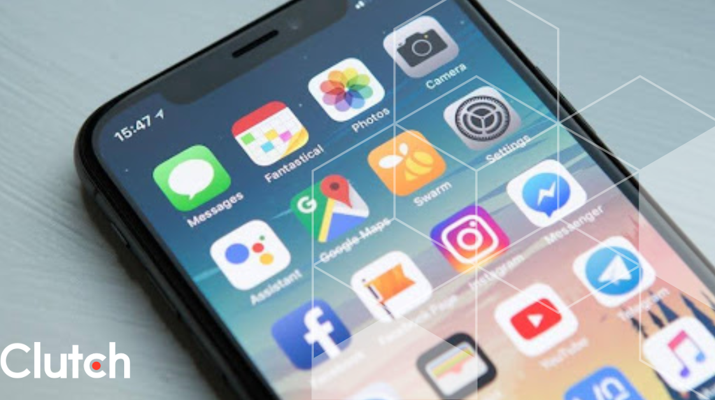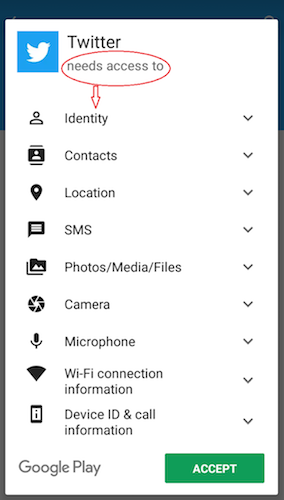

Updated September 26, 2025
A native app is software built for one specific operating system, like iOS or Android, using that system’s own programming tools. Because it’s designed for one platform, it runs fast, works offline, and can fully tap into device features like the camera, GPS, or push notifications. Native apps often feel smooth and reliable, but they can also cost more to build and update than other options.
This guide will help you decide if native is right for your business, with priorities to keep in mind for your app launch, including performance, hardware integration, and offline use.
Native apps are platform-specific apps that are coded in a platform-specific programming language. This means that if the app is being built for an Android platform, it will use Java; if it is for a Windows phone, it will use C#; and if it is for iOS, it will use Objective C or Swift.
Looking for a Mobile App Development agency?
Compare our list of top Mobile App Development companies near you
To do this, you’ll need platform-specific development tools from the platform developers:
Compare our list of top Mobile App Development companies near you
Once they’ve been downloaded, native apps live on and are accessible through your device. For example, native apps would be represented by the icons on your device’s home screen.
![]()
Because native apps are specially designed for a particular device, they have full liberty to use the features that are present on the device, such as its camera, contact list, GPS, and Bluetooth.

Native apps are downloadable from their respective app stores – Apple App Store for iOS apps and Google Play for Android. Most of the apps on your mobile device are native apps.
Looking for a native app developer? Check out our shortlist of top mobile app development agencies.
To understand why native apps perform the way they do, it helps to break down how they’re built and what makes them unique. Here are the key characteristics that set native apps apart:
Native apps work on the device’s operating system. In simpler terms, native apps require complete access to all the hardware and functionality of a device and live on a device.
The platforms provide app developers with a standardized SDK, or software development kit, which is a kit containing a set of tools, code samples, libraries, documentation, and guides that allow developers to create apps on a particular platform.
Because native apps are specially designed for a particular device, they are free to use the device's features, such as its camera, contact list, GPS, and Bluetooth.
The SDKs, combined with a powerful set of tools for developing native apps, deliver high performance and good user experience.
Native apps also have faster load times than web apps because they are built specifically for their given platform. Such apps don’t require “middleware” to communicate with the device’s operating system, providing better speed and responsiveness.
While native apps require more time and investment to develop, they offer several important benefits that can make them worthwhile — especially for businesses prioritizing performance, user experience, and device integration.
Native applications are a nuanced version of their device’s default apps. When a user performs some functions, they quickly understand the natural flow of the application because it’s similar to apps already on the device.
Mobile applications that try to emulate the look and feel of native apps often fail to generate a feeling of familiarity, and users may struggle to connect with the app.
Because native apps are native to the platform, they work faster. Many elements come preloaded. Only the user data is fetched from the web rather than the entire application, and since they work with the device’s built-in features, they are speedy.
Native apps work even if there is no internet connectivity. In situations where you’re stuck somewhere with limited or no service — such as an airplane, underground tunnel, or subway — native apps remain accessible.
Native apps are downloadable through official app stores: the Apple App Store for iOS and Google Play for Android. This gives them increased visibility, credibility, and access to platform-native monetization and distribution tools.
Native apps offer speed and seamless integration with device features, but they also come with notable trade-offs. Development complexity, high costs, and platform-specific constraints can make them a challenging investment — particularly for small teams or early-stage companies.
Developers have no flexibility regarding the platform for developing native apps. They also need to build separate codebases for each platform (iOS and Android), which can slow the timeline significantly. A quality native app typically takes around 18 weeks to develop, and that estimate increases with complexity.
The programming used in native apps is quite tricky, and developers who code in this language are scarce.
Thus, native app development requires more labor, which adds to the time and cost of development.
Also, with different codes for different platforms, developing native apps takes even more time and, therefore, money.
The cost of maintaining the native apps is also very high. Maintenance cost is about 15 to 20% of the app development cost. For example, a basic native app costing $25,000 will have a maintenance cost of about $5,000.
The more a native app costs to develop, the higher the maintenance costs will be, too.
Native apps are built for a single operating system, which means they can’t be reused or quickly ported to another platform. Teams must write and maintain two separate apps to support both iOS and Android users.
This lack of flexibility can be a major drawback for businesses hoping to reach a broad audience without doubling their development resources.
Building a native app usually means writing separate code for each platform. iOS apps use Swift or Objective-C and are built in Xcode. Android apps use Java or Kotlin and are built in Android Studio. These tools are solid — they offer debugging, performance testing, and design support — but switching between two codebases can slow things down.
For teams that can afford the time and budget, this setup gives you a faster, better-integrated app. But if speed-to-market or cross-platform support is a bigger concern, you might want to explore hybrid or web-based options instead.
The latest platform updates and releases feature improved tools, smoother workflows, and better, faster interfaces for native-app developers.
Android Studio’s “Narwhal Feature Drop” is the latest release with feature updates that include Jetpack Compose preview improvements for better UI iteration, resizable previews, and AI-powered UI generation, plus crash fixes and journey testing via Gemini from the Meerkat Feature Drop.
Xcode 26 beta launched in August 2025 with greater AI integration and AI coding assistance, faster workflows, smarter tooling, enhanced accessibility, and UI power user features, including Playground macro for real-time code previews across any Swift code.
Not sure if native apps are the right choice? It helps to see how they stack up against other types, like web and hybrid apps. Compare the app types and see which is best for you, based on desired features, goals, budget, and timeline.
| Feature | Native Apps | Web Apps | Hybrid Apps |
| Performance | Excellent | Good | Good |
| User Experience | Seamless integration, device-like feel | Browser-based, less responsive | Near-native feel, may lag |
| Development Cost | High | Low | Medium |
| Device Access | Full | Limited | Partial |
| Offline Use | Yes | No | Limited |
| Maintenance Complexity | High | Low | Medium |
| Time to Market | Long | Short | Medium |
Web apps run in a browser. You don’t have to download them — just visit the site, and you’re in. That makes them quick to access and easy to update. Most are built with HTML, CSS, and JavaScript, and they work on just about any device with internet access.
The trade-off? Web apps can’t match the speed or smooth feel of native apps. They also don’t connect as deeply with a phone’s built-in features, like GPS or the camera. If performance and user experience matter most, native apps usually do better.
Hybrid apps try to offer the best of both worlds. They’re built with one codebase — often using frameworks like Flutter or React Native — and then packaged to run on both iOS and Android.
They save time and money during development. But there’s a cost in performance. Hybrid apps might not feel quite as smooth or responsive, especially when doing complex tasks or animations.
If your app needs to look sharp, load fast, and take full advantage of the device, going native is still the better bet. But if you're testing an idea or working with a tight budget, a hybrid app can get you there faster.
Native apps are fast, smooth, blend in with the device’s features perfectly, and can work offline. They also come with a costly and time-consuming development process. These challenges can mean native apps are not always the best fit for everyone.
Native apps are best for companies building mobile games, financial platforms, or real-time communication tools, where performance, user experience, speed and responsiveness directly affect usability. Going native also makes sense for apps that depend heavily on hardware integration and features like the camera, GPS, biometric authentication, or advanced sensors.
Larger organizations that have more to spend (and lose) on brand perception and customer satisfaction want the smooth, polished experience native apps can deliver and are able to staff separate iOS and Android teams to ensure peak quality on both platforms.
Having to build and maintain separate platforms, each with its own codebase and updates, is what makes native app development so expensive, complex and time-consuming. Startups or small businesses with limited budgets may do better going hybrid or cross-platform, which allows for simultaneous builds and launches on iOS and Android, reducing costs and getting the app to market faster. For simple apps like basic content portals, informational guides, or form-based tools, the extra power of native development probably isn’t necessary.
Compliance requirements can influence native app design and development due to regulations on data storage and permissions. Under Europe’s GDPR, apps must request explicit consent before accessing personal information and provide users with the ability to delete their data on demand. Under CCPA, apps targeting California users must include clear “Do Not Sell My Data” options and honor them across systems. These regulations must be factored into how developers design permission flows, storage practices, and user settings from the ground up.
To get started on your native app development project, contact a few of the companies from Clutch’s directory pages.
Is a native app faster than a web app?
Yes, native apps are faster than web apps. Native apps are built specifically for a device’s operating system and can directly use its hardware. This results in smoother animations, quicker load times, and better offline performance. Meanwhile, web apps run in a browser, which adds an extra layer that can slow them down.
What is the main disadvantage of native apps?
The biggest disadvantage of native apps is cost. Android and iOS each require their own versions, so development and maintenance takes more time, talent, and money. For smaller teams or businesses with limited resources, hybrid or cross-platform solutions can be the better choice.
Can native apps run on multiple platforms?
No, as each platform requires its own codebase and development tools. An app built for iOS won’t run on Android, and vice versa. Companies can either build separate native apps for both platforms or choose cross-platform frameworks to share a single codebase.
Are native apps more secure than other apps?
Yes, overall. Native apps can leverage platform-level protections like biometric authentication, encrypted storage, and built-in permission systems. They also receive security updates through official app stores. Security also depends on developer practices, as poor coding or weak data handling can undermine platform protections.
Additional Reading


